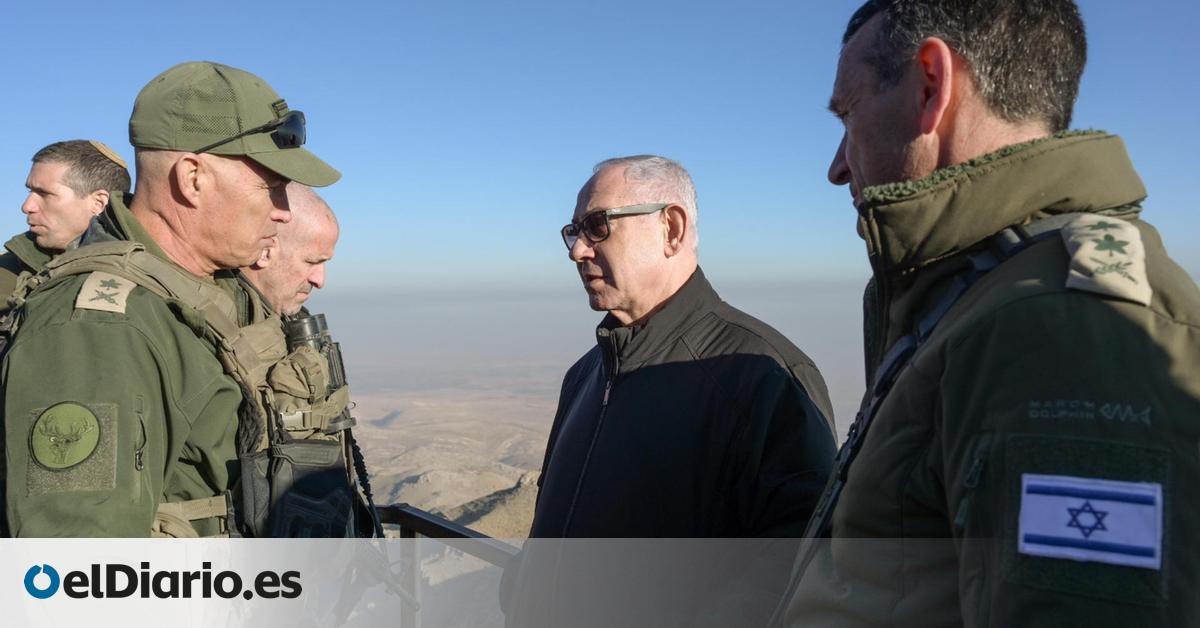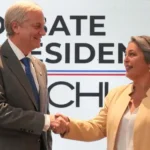
Qatar, the main mediator in Israel’s punitive war in the Gaza Strip – which has already left more than 46,000 Palestinians dead – desperately announced in early November that it was withdrawing from negotiations to achieve a ceasefire until the parties showed “their will and seriousness to end the brutal war.” A month later they resumed their work and now, after several weeks of negotiations at the highest level, the ceasefire seems to be closer than ever, according to their own Foreign Ministry spokesman, Mohammed Al Ansari.
All those involved warn that the current negotiations can derail at the last second, as has happened on other occasions, but they have not hidden their optimism. Even the Israeli prime minister’s office has revealed some details of the ceasefire agreement in exchange for the release of hostages held by Hamas.
“Israel wants this deal to succeed and is willing to pay a high price to get its people back,” said the prime minister’s spokesman, David Mencer. Hamas has confirmed that the agreement is in its final phase, however, a member of the organization has assured Reuters that the group is waiting for Israel to deliver the troop withdrawal maps agreed upon in the draft.
How did we get here?
“Qatar will not accept that mediation is a reason for blackmail, as we have witnessed manipulations since the failure of the first pause, especially by retracting the obligations agreed through mediation and exploiting the continuation of negotiations to justify the continuation of the war,” denounced Al Ansari on November 9.
Just before that statement, Donald Trump had won the US elections, Benjamin Netanyahu had dismissed Defense Minister Yoav Gallant – eliminating one of the few who questioned his decisions – and ended an ultimatum from Washington to Israel demanding a greater entry of humanitarian aid.
“Our objective as mediators is suspended while waiting for both parties to show seriousness to return to the negotiating table,” Al Ansari stated on December 3. However, shortly afterwards Qatar quietly resumed work.
Donald Trump was pushing for a deal before his inauguration, issuing a threat: “Hell will break out in the Middle East” if the hostages are not returned when he takes office. The movements had already begun and the president-elect had even sent his Middle East envoy, Steve Witkoff, to meet with Netanyahu and the Qatari Prime Minister, Mohammed bin Abdulrahman Al Thani.
“The incoming Trump administration appears to have influence over Netanyahu, who wants to curry favor with Trump. Offering a ceasefire as a welcome gift to the White House is tempting,” Jørgen Jensehaugen, senior researcher at the Peace Research Institute of Oslo (PRIO) and specialized in the conflict, tells elDiario.es.
After weeks of negotiations – in which Witkoff has worked alongside the authorities of the outgoing US Government – the ceasefire has gone from a chimera to a real possibility in just two months. “We especially appreciate the role of both the Biden Administration and the incoming Trump Administration in the talks over the past two weeks. They have participated fully in the conversations. They have worked together here in Doha and further afield in the region to ensure that an agreement is reached,” the Qatari Foreign Ministry spokesperson said on Tuesday.
“Does anyone really believe that Trump’s new Middle East envoy, Steve Witkoff, a savvy New York real estate developer and investor, forced Netanyahu to do it? If you know Netanyahu, yes. He wanted them to put pressure on him just before Trump’s inauguration next Monday,” analyst Alon Pinkas wrote this Tuesday in Haaretz. “The deal that may — and still may not — be signed now was on the table last May, again in July and virtually ever since, but Netanyahu, in the name of ‘an existential war’ that will produce a ‘total victory’ waited until the American elections and then the inauguration before accepting it,” he added.
The details of the text
According to leaked details of the agreement, the first phase of the ceasefire will last 42 days, during which Hamas will release 33 hostages. In exchange, Israeli troops will progressively withdraw from Gaza’s population centers – creating a ‘buffer zone’ along the northern and eastern border -, allowing the return of unarmed Gazans to the north, and releasing Palestinian prisoners (the The number will depend on the number of live hostages, but published figures range from hundreds to a thousand). On the 16th, negotiations will begin on the second phase of the agreement for the release of the rest of the hostages, including the deceased.
To understand the effects of the agreement on the future of war, it will be necessary to observe the dynamics on the ground, says Jensehaugen. “The Israeli position is that this is temporary. Hamas’s position is that this should be the end of the war,” says the researcher. “Hamas is in a terrible state, but they will have survived. They will also be able to add support by ensuring the release of so many prisoners,” he adds.
Meanwhile, the Israeli far right is pressing to try to stop any advance. The Minister of National Security, the Ultra Itamar Ben-Gvir, has threatened to resign and has encouraged his colleague, Bezalel Smotrich, the Ultra Minister of Finance, to do the same, which would endanger Netanyahu’s government.
“Last year we managed, thanks to our political power, to prevent this agreement from being carried out,” said Ben-Gvir, despite the fact that Israel has always blamed Hamas for not reaching the ceasefire. “Since then, however, other parties that support the agreement have joined the Government, and we are no longer the decisive factor.”
Netanyahu’s spokesperson recalled this Tuesday that if the agreement is closed, the Government will have to vote on its application, as happened with the 2023 ceasefire, although unanimity is not required.
Source: www.eldiario.es

